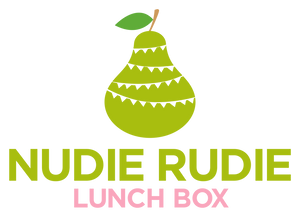· By Julia Boase
Health Halos and Kid's Food
Recently a follower asked me whether she was making one of my recipes “healthier” by making some substitutions to a few of the ingredients. It was an interesting question and one I thought worth exploring here.
The concept of a “healthy” food is often difficult to define. Public health bodies have tried to do this with health star ratings and alike, and as dietitians we also try to educate people on what to look for on a nutrition information label. These are far from perfect systems however, and often cause a lot of consumer confusion. Food manufacturers are also known to manipulate their products so that they fit certain criteria and get a better star rating (ever wondered why that packet of biscuits you bought has about 6 mini cookies or chips in it, hardly enough to satisfy you is it?). In Australia we also allow a certain number of “health claims” to be made on the front of food packets, for example “good source of protein”, “low fat” or “good for heart health”. Whilst there are certain criteria that must be met to promote a health claim, the mere presence of these claims often leads consumers to over estimate how healthy the product actually is.
The main problem with all of this is that it is impossible to separate food, nutrition and marketing and this is where the concept of a health halo comes in. A health halo can be given to any food that has a perception of being “good” for you, even where there is little evidence that this is the case. In many instances the health halo leads people to over consume the product. Let me give you an example. Sugar is a hot buzz topic at the moment and consequently we are seeing products in the supermarket with claims like “low in sugar”. To make this claim a company must show that the product contains no more than 5g of sugar per 100g. Great you think as a consumer, and you buy the new low sugar cookies. You happily serve this product to your kids and you don’t mind handing it out as a snack because it’s low sugar, so it’s got to be ok right? Well not necessarily. Often products like this still contain plenty of saturated fat and refined carbohydrates and are fairly empty when it comes to nutrient content. Sure you’ve cut down a bit on that days sugar intake, but what have you really contributed to you or child’s nutrition that day? Not much.
As dietitians we are far more interested in assessing nutrition by looking at your overall dietary pattern, not individual foods. And this is always where my advice lies. Whether a cookie is low fat, low sugar or high fibre it’s still a cookie, and that’s a food that you want to take up only a small part of your diet. Focus your efforts on getting your overall dietary pattern as good as it can be (so plenty of veggies, fruits, wholegrains, nuts and seeds, dairy and quality proteins) and it won’t really matter whether the cookie you choose to eat is low sugar or not.
When it comes back to the original question of whether substitutions to recipes are healthful or not, my answer is this: There’s nothing wrong with aiming to make a recipe more nourishing. In fact when I develop recipes I often look for ways to boost the fibre and general nutrition content whilst trying to keep the sugar and fat to reasonable levels. BUT (and this is a big one) the end product has to taste good. It’s really important that we get a certain level of satisfaction from the food we eat. If we’re really craving a deliciously sweet cookie but eat something that tastes likes cardboard, it’s not going to satisfy us and we’ll be on the look out for the next thing to take that craving away.
So next time you reach for that expensive packet of coconut sugar to make your cookies, ask yourself whether it’s really contributing much nutrition to your diet (hint- it’s not)? You’re better spending that money on fresh produce and focussing on your diet overall.
